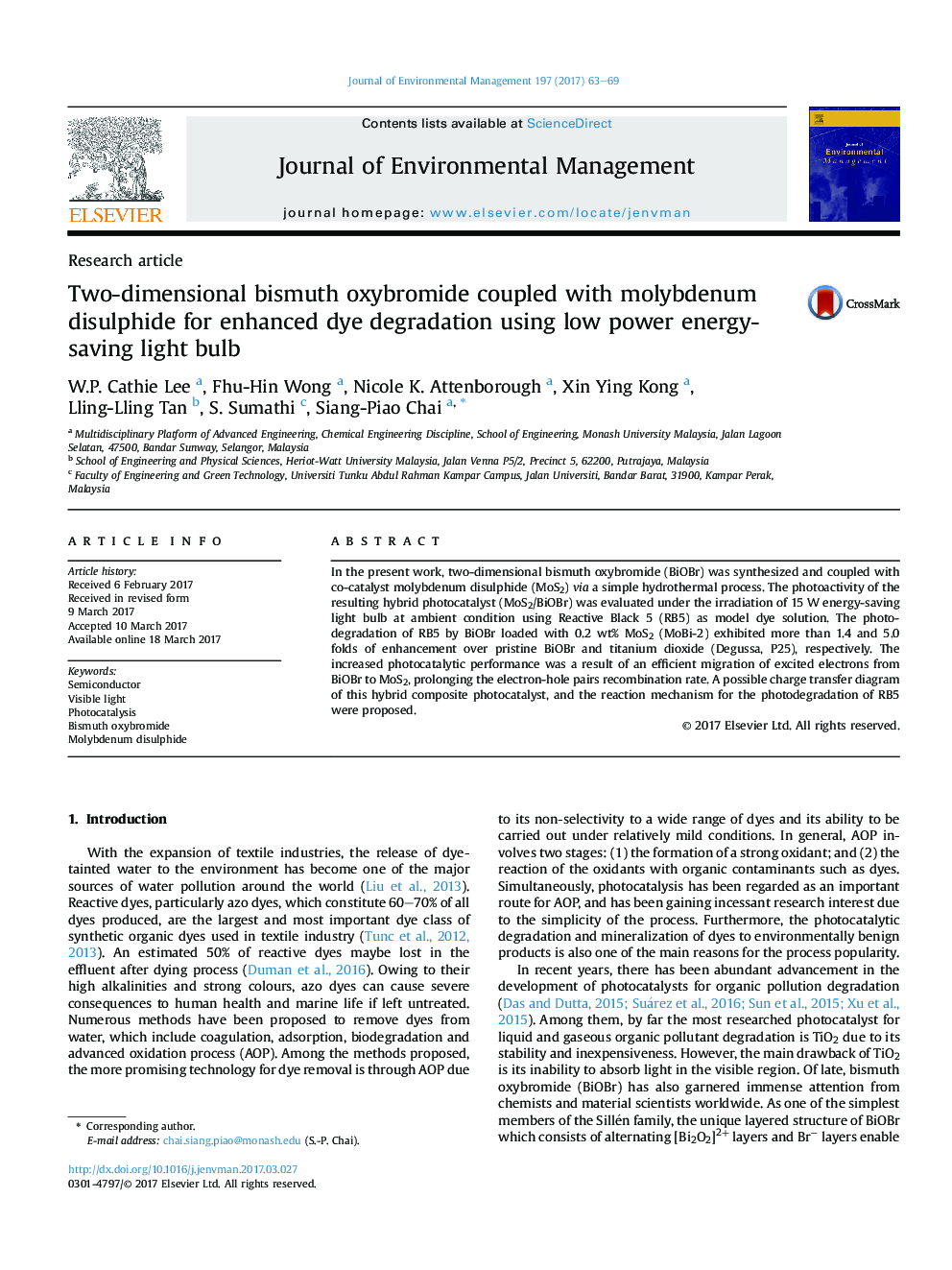| Article ID | Journal | Published Year | Pages | File Type |
|---|---|---|---|---|
| 5116932 | Journal of Environmental Management | 2017 | 7 Pages |
â¢Hybrid of 2D-bismuth oxybromide and molybdenum disulphide was developed.â¢The developed photocatalyst was tested under 15 W powered energy saving light bulb.â¢Photodegradation of Reactive Black 5 showed 5-folds improvement over P25.â¢Reaction mechanism was proposed for the degradation of Reactive Black 5.
In the present work, two-dimensional bismuth oxybromide (BiOBr) was synthesized and coupled with co-catalyst molybdenum disulphide (MoS2) via a simple hydrothermal process. The photoactivity of the resulting hybrid photocatalyst (MoS2/BiOBr) was evaluated under the irradiation of 15Â W energy-saving light bulb at ambient condition using Reactive Black 5 (RB5) as model dye solution. The photo-degradation of RB5 by BiOBr loaded with 0.2Â wt% MoS2 (MoBi-2) exhibited more than 1.4 and 5.0 folds of enhancement over pristine BiOBr and titanium dioxide (Degussa, P25), respectively. The increased photocatalytic performance was a result of an efficient migration of excited electrons from BiOBr to MoS2, prolonging the electron-hole pairs recombination rate. A possible charge transfer diagram of this hybrid composite photocatalyst, and the reaction mechanism for the photodegradation of RB5 were proposed.
